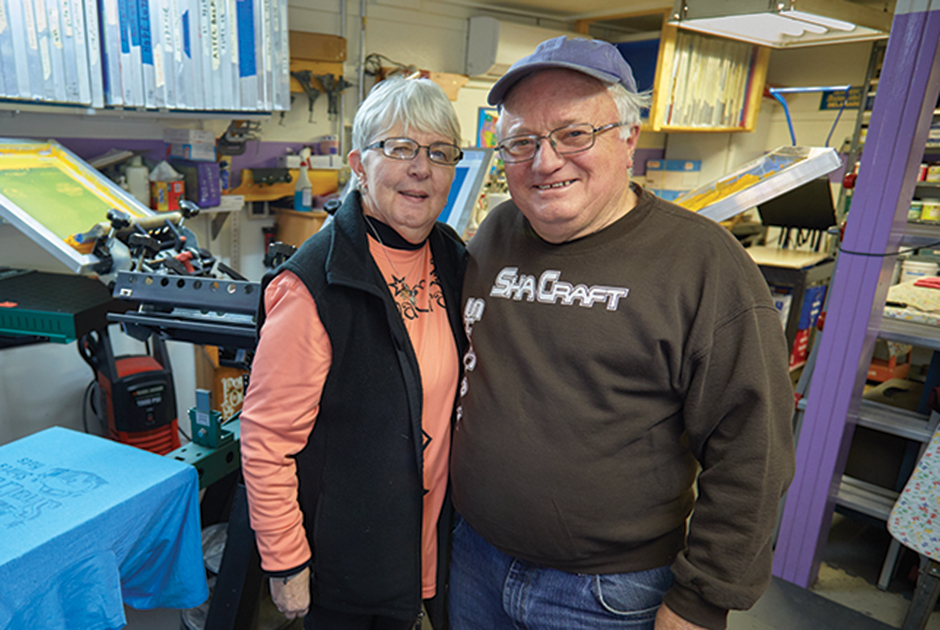Sue and J.R. Howell own and operate Marshallton, Delaware-based Shacraft Inc., a home-based decorated-apparel business that offers screen printing, sublimation, embroidery and CAD-cutting services.
The couple started the company as an embroidery shop in the early 2000s after J.R. Howell sustained an on-the-job injury, ending his career as a railroad mechanic.
“I’ve always been an active person and I was too young to retire,” J.R. Howell says. “Sue has always worked with crafts, so we purchased a singlehead embroidery machine and set up shop in our basement.”
When requests came in for screen-printed garments, they outsourced the work but the contractor proved unreliable. When Shacraft started receiving orders for more than 1,000 screen-printed sweat shirts and T-shirts, J.R. Howell knew it was time to bring screen printing in house.
Quality Focus
After attending several trade shows, the Howells purchased screen-printing equipment from Vastex Intl. and attended a weekend training course at the company’s facility to learn the screen-printing process. They then set up a four-color/two-station V-2000HD manual screen-printing press in their basement and began printing T-shirts for local businesses, churches and schools.
Sue Howell creates the artwork and J.R. Howell operates the press, printing up to 35 single-color shirts an hour.
“It takes me a little longer because I prefer to focus on quality,” J.R. Howell says. “I don’t often try to accelerate because I’m keeping a close eye on the shirts and the printing.”
Using a pin-registration system, he positions film positives on the screens off press and then locates the screens on press in register, saving time and reducing rejects.
When printing multiple colors, he uses an infrared flash unit with adjustable heat that flashes plastisol ink in less than 10 seconds. Printed garments are cured in an EconoRed infrared conveyor dryer with a 30-inch-wide belt and heater height adjustment to compensate for sweat shirts, hoodies and other bulky items without scorching.
J.R. Howell says curing a shirt takes about 30 seconds. As the garments exit the dryer, he monitors the ink’s surface temperature with a laser thermometer and adjusts the dryer’s temperature and belt speed, if needed, to ensure complete curing at the desired rate.
Making Space to Grow
Today, embroidery, sublimation and CAD-cutting services have taken a backseat to screen printing, which accounts for about 70% of the Howells’ business. As the shop expanded, they dismantled the screen-printing press and moved their workshop from the basement to the garage.
“When we set up the press again, the parts were easy to reattach, and everything was in line,” Sue Howell says. “We didn’t have to tinker with it to get it to work.”
J.R. Howell prints film positives with an inkjet printer using raster imaging processing (RIP) software to achieve opaque blacks. He tapes film positives to the screens in register, then uses an E-1000 ultraviolet screen-exposing unit with a vacuum pump to tightly sandwich the positive between the screen and glass, using the touch screen to adjust exposure times.
He admits that he was reluctant to start screen printing, but now enjoys the process and finds the results rewarding.
Mark Vasilantone is owner of Vastex Intl. Inc. and builds on the legacy of his father, Michael Vasilantone, the company’s founder in 1960 and an inventor and pioneer in mass producing screen printed T-shirts. For more information or to comment on this article, email Mark at [email protected].





